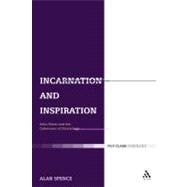
| Preface | p. xi |
| Abbreviations | p. xv |
| Two Ways of Thinking about Christ: Incarnation or Inspiration | p. 1 |
| The prayers of Jesus | p. 1 |
| Incarnational christology | p. 2 |
| Inspirational christology | p. 4 |
| Compatibility and the witness of tradition | p. 5 |
| John Owen | p. 15 |
| Incarnation: The Son Assumes Human Nature | p. 17 |
| The writing of Christologia | p. 17 |
| Christ as the way of our knowing | p. 18 |
| The context in which Christ is known | p. 20 |
| The wisdom of God and the person of Christ | p. 21 |
| The appropriateness of the incarnation | p. 25 |
| The pre-existent Son | p. 26 |
| God's eternal counsels | p. 28 |
| The agent of the incarnation | p. 30 |
| The Word became flesh | p. 32 |
| The assumption of human nature | p. 34 |
| Anhypostasia | p. 35 |
| The hypostatic union | p. 37 |
| The natures distinguished | p. 39 |
| Interaction between the natures | p. 41 |
| Inspiration: The Spirit Renews God's Image in Christ's Human Nature | p. 43 |
| Quakers and Socinians | p. 43 |
| The Spirit in the Christian life | p. 46 |
| The Spirit in nature and in grace | p. 49 |
| Christ as the foundation and goal of the Spirit's work | p. 50 |
| Firstborn among many brothers | p. 52 |
| The Spirit's work in Jesus | p. 54 |
| Inspiration and incarnation | p. 59 |
| Master-stories | p. 62 |
| Integrity of the person | p. 64 |
| The Mediator: One Person Acting in Two Natures | p. 65 |
| Athanasius - The incarnation of the Word of God | p. 65 |
| Anselm - Why was God made man? | p. 67 |
| Calvin - Incorporating both perspectives | p. 70 |
| The office of Mediator | p. 71 |
| The person of the Mediator | p. 72 |
| From Logos to Mediator | p. 76 |
| The Mediator as subject of the incarnate life | p. 79 |
| Evaluation | p. 80 |
| The Son and the Father: Of the Same Being | p. 84 |
| Introduction of the homoousion | p. 85 |
| Arian christology | p. 85 |
| The Athanasian alternative | p. 87 |
| The Socinians | p. 91 |
| Owen's response | p. 96 |
| Conclusion | p. 101 |
| The Son and the Children: An 'Autokinetic' Human Nature | p. 104 |
| The relation between the natures | p. 104 |
| The Apollinarian solution | p. 105 |
| An alternative account | p. 109 |
| The nature of Christ's humanity | p. 110 |
| The self-consciousness of Jesus | p. 120 |
| Conclusion | p. 121 |
| Trinitarian Agency: The Son and the Spirit as Distinct Agents | p. 124 |
| Our knowledge of God as Triune | p. 124 |
| The essence of the doctrine | p. 126 |
| Opera Trinitatis ad extra sunt indivisa | p. 128 |
| Distinct principles of operation | p. 129 |
| Resolution | p. 131 |
| Consistent? | p. 132 |
| Strictures on the tradition | p. 133 |
| New possibilities | p. 135 |
| Conclusion | p. 138 |
| The problem of christology | p. 138 |
| Owen and the coherence of Chalcedon | p. 144 |
| Coherence and modern christology | p. 149 |
| Bibliography | p. 155 |
| Index | p. 161 |
| Table of Contents provided by Ingram. All Rights Reserved. |
The New copy of this book will include any supplemental materials advertised. Please check the title of the book to determine if it should include any access cards, study guides, lab manuals, CDs, etc.
The Used, Rental and eBook copies of this book are not guaranteed to include any supplemental materials. Typically, only the book itself is included. This is true even if the title states it includes any access cards, study guides, lab manuals, CDs, etc.